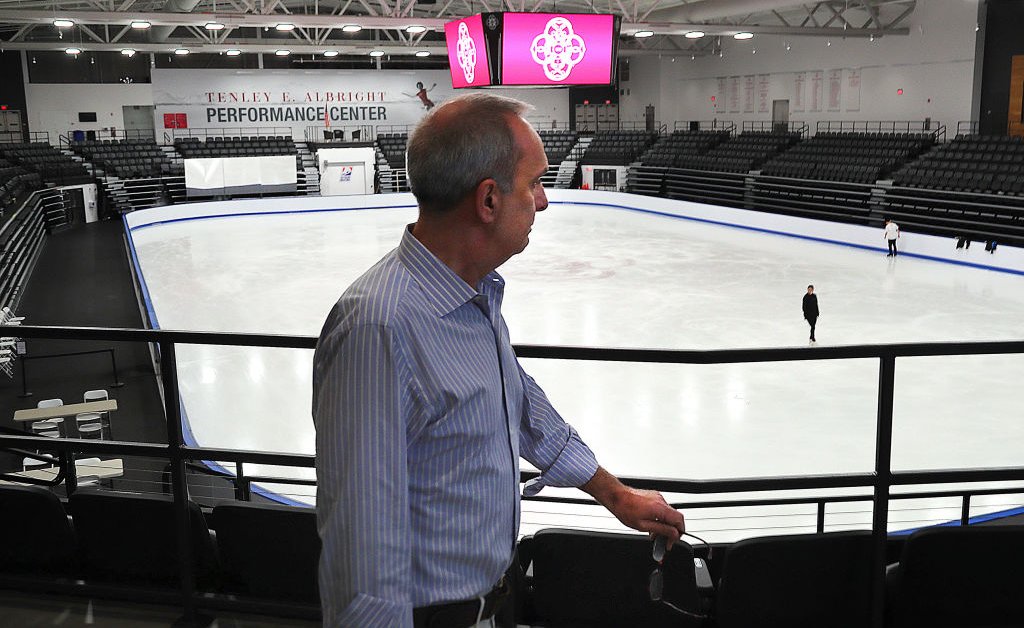After celebrating an exciting U.S. Figure Skating Championships and National Development Camp in Wichita, Kansas last week, several members of the skating community were aboard American Airlines Flight 5342 when it collided with a helicopter. There are no known survivors. When I first heard the news, it was hard to believe. How could this happen to our sport again?
In 1961, the entire U.S. figure skating team boarded a flight headed to the World Championships in Prague. Their flight crashed in Brussels and there were no survivors. The skating community lost 18 skaters and 16 coaches, judges, and family members that day. The devastation was profound and skating champions who had retired by then talk about the sadness of living through that and how it impacts them today, almost 64 years later.
I am an Olympic gold medalist, an attorney, and a member of the U.S. national figure skating family. What you must know about us is that the skating community is small and tight-knit. We’re often portrayed as intensely competitive, but the truth is, we’re all a family. People may say we “compete against” each other but we really “compete with” each other. This camaraderie was evident watching the National Championships last weekend when Amber Glenn, who went on to win her second national championship, wished another skater good luck as that skater prepared to compete. Experiences like these and relationships we form while competing become a core part of who we are as people. This is one reason why the tragic loss of those aboard Flight 5342 will painfully ripple throughout the U.S. figure skating community for years to come.
There is so much that makes the sport of figure skating difficult: the day in and day out of pushing yourself to the limit, of finding where that limit is and working with it, the mental toll, the understanding of the importance of stepping back, the grind of training, the sacrifices you make in almost every other area of your life to pursue excellence in this one. And then, to have to try to hit all your marks at a specific time in a specific place under conditions where you don’t have complete control. Figure skating is stressful and nerve-wracking and there is a respect among the skaters because we’ve all been in that position. Some days it’s like everything is in your favor and other days your main goal is to not embarrass yourself too much. It’s thrilling and it’s humbling. That is figure skating.
When people talk about their skating family, it’s because that’s what it can feel like. You eat together, you train together, you travel together, you compete together, you laugh together, you cry together. Sometimes you end up spending more time with your skating family than with people in your actual family.
When I heard about the recent plane crash at Ronald Reagan Washington National Airport, and that there were young skaters, parents, and coaches from our skating family on board, it was devastating. This group was coming back from the National Development Camp. The camp was created a few years ago with the idea of helping promising young skaters who aspire to earn a spot on Team USA reach that goal while bonding with their peers. The first fully in-person camp was in 2023 and had rave reviews among the young skaters and U.S. Figure Skating, which hosts the invite-only camp.
The camp, held in conjunction with the National Championships, gives young skaters quality time together through on-ice practices and classes off the ice related to being an elite athlete. As many who participated in sports as a young person can attest, you may remember practices, but years later, the most vivid memories are the shared bus rides, laughing over pizza dinners, or getting together to watch a movie. These are the kinds of memories the kids were forming.
This joy is part of why it is so hard to grasp the extent of this tragedy. I went to the highest competitive level in skating, and when I think back on my fondest memories, many are from that stage of my career—when I got a glimpse of the mountain and established bonds that have lasted a lifetime. The skating friends I made during this time and I could not have been more excited to embark on the adventure ahead of us. I qualified for my first National Championships when I was 12-years-old, around the same age of some of the skaters at the camp, and getting to watch the skaters I saw on TV perform, walking around the same hotel they were, riding in the same elevators, getting to be part of the competitions I aspired to be in—it was the greatest feeling I could imagine. These kinds of “firsts”—the first sectionals, the first chance at an international competition, —are what these kids were experiencing together. For these young lives to have been cut short just as they were experiencing these firsts seems unfathomable. My thoughts are with everyone grieving this tragedy.
Outsiders might see the DC crash and understand that figure skating may have lost a future Olympic Champion. But the skating community knows it’s so much more than that. What makes our sport special is the people—our friends, relationships, and shared experiences. Now, for many, memories of an indelible time in their lives has forever changed.
U.S. Figure Skating set up a memorial fund as a way to honor the lives lost in 1961, stating that a financial gift could help “Secure our future by honoring our past.” The fund has supported thousands of skaters through scholarships for both skating and academics, exemplifying that skating is more than, well, skating. The past few days have shown that while the role skating plays in our lives may change over the years, the relationships we make through the sport remain unbreakable. It is unimaginable that U.S. Figure Skating would be in the position of setting up another fund within a similar context in 2025, this one to support those directly impacted by the crash, but it is the least we can do for our community.
Indeed, we are all in mourning—again.


